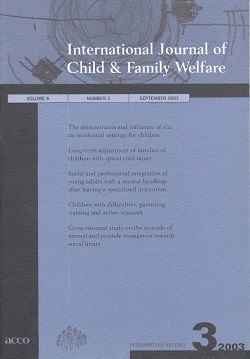The determinants and influence of size on residential settings for children
Keywords:
residential placements, placement size, residential educationAbstract
This paper examines why residential institutions are the size they are and summarizes research findings on the influence of size on child outcomes and organizational processes. The literature review shows that economic and ideological factors have historically determined the size of residential institutions. More recently, intellectual factors have provided justification for smaller unit size. The research evidence fails - with one exception - to show any correlation between the size of establishment and placement outputs or child outcomes, but seems to support the potential benefits of small units to the experience of students and staff. However, the extent of any effect depends on the context in which the groups operate. A model that considers the size in the context of institutional aims and structures is proposed as a more fruitful approach to understanding the significance of size in service development.

